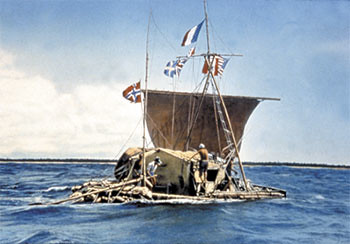DIY Friday: DIY Energy
Friday, April 28th, 2006A belated happy Earth Day to all. We went kinda "off the grid" last Friday, in honor of Earth Day, and thus found it somewhat difficult to get a DIY Friday post published. We had it all ready to go, but that whole smoke signals set up didn’t quite work. So, here’s our belated DIY Friday post, as the clock ticks down on Earth Day afterglow.
 This first bit isn’t exactly a DIY project, but having a solar generating briefcase last Friday — like the one we spotted on ProductDose recently — might have helped get the DIY Friday post published. It’s handier than a gas generator, and so much less fossil fuel dependent. Besides, it generates more than enough electricity to power a laptop, so we could have charged up the iPod while we were at it.
This first bit isn’t exactly a DIY project, but having a solar generating briefcase last Friday — like the one we spotted on ProductDose recently — might have helped get the DIY Friday post published. It’s handier than a gas generator, and so much less fossil fuel dependent. Besides, it generates more than enough electricity to power a laptop, so we could have charged up the iPod while we were at it.
Speaking of iPods, this Altoid tin hacked into an iPod charger sounds like a good idea, if only the inventors could get it working. They cite a couple of reasons why it doesn’t, which I’ll post here in hopes that someone will be able to help them out.
There are (at least) two reasons this charger _does not_ work:
1. The transistor doesn’t let enough current flow to fully charge the inductor. The other option is a FET, but a FET needs a minimum of 5 volts to switch fully on. This is discussed in the SMPS section.
2. The inductor is simply not big enough. The charger doesn’t produce nearly enough current for the iPod. We didn’t have an accurate way to measure the iPod charging current (save cutting apart the origional charging cable) until our parts arrived from Mouser. The inductors recommended are nowhere near large enough for this project. A suitable substitution might be the coil Nick de Smith uses on his MAX1771 SMPS. Its a 2 or 3 amp coil from digikey:
[ http://www.desmith.net/NMdS/Electronics/NixiePSU.html#bom ]
This device can provide a small amount of power to a USB or firewire device, but not enough to charge an (3G) iPod. It WILL power, but not charge, a totally dead 3G iPod.
 Meanwhile, as long as we’re on the subject of power, this homebrew wind turbine sounds like a pretty good idea. I don’t know how much power it generates, but I bet it will power a laptop and an iPod (probably) as the builder says he’s seen "3800 watts from it in a high wind." I’m not sure how much power that is, but he says he’s a bit more than he can use.
Meanwhile, as long as we’re on the subject of power, this homebrew wind turbine sounds like a pretty good idea. I don’t know how much power it generates, but I bet it will power a laptop and an iPod (probably) as the builder says he’s seen "3800 watts from it in a high wind." I’m not sure how much power that is, but he says he’s a bit more than he can use.
 The guy who made the wind turbine would probably do well to team up with the David Mears — a professor of Bioresource Engineering at Rutgers University — who managed to hack his entire house into such an energy efficient mode, with adjustments including a woodstove and a solar enabled greenhouse (pictured above), that he and his family went 25 years without getting a heating bill. That’s also 25 winters of not burning fossil fuels to heat the house. That’s not just good for the pocket book, but good for the earth too. And that makes for a happy (though belated) Earth Day.
The guy who made the wind turbine would probably do well to team up with the David Mears — a professor of Bioresource Engineering at Rutgers University — who managed to hack his entire house into such an energy efficient mode, with adjustments including a woodstove and a solar enabled greenhouse (pictured above), that he and his family went 25 years without getting a heating bill. That’s also 25 winters of not burning fossil fuels to heat the house. That’s not just good for the pocket book, but good for the earth too. And that makes for a happy (though belated) Earth Day.



